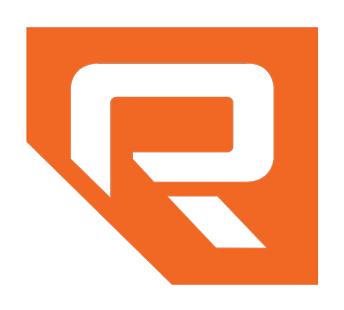Federal Trade Commission (FTC) Disputes Pharma-Industry Patent Listings
American consumers have long been forced to pay what amounts to exorbitantly high prices for brand-name prescription drugs. Thankfully, the severe mismatch between branded drug prices and consumers’ ability to pay for them has received governmental attention at the federal level, with the current presidential administration and the Senate working with the FTC. Specifically, the FTC has disputed certain patents as being improperly listed in the FDA’s Orange Book, seeking to de-list them and accordingly to prevent them from qualifying for additional regulatory protections that can drive higher costs.
This existing disconnect stems from a variety of contributing factors – some arguably legitimate, such as recent data indicating that new drug development costs have consistently risen so that the average cost of new drug development at top 20 global biopharmaceutical companies has now reached an astounding $2.3 billion(1). Other factors nevertheless appear to resemble traditional price-gouging, with noted variances in inhaler costs between the U.S. (at $500) and France (at only $7 for the same inhaler) serving as a stern example of the ongoing drug affordability crisis(2).
High prescription drug prices have resulted in about 1 in every 3 Americans not being able to afford medications prescribed by their doctor.2 Thankfully, the Federal Trade Commission (FTC) and U.S. Senate have recently ramped up efforts in concert with the Food and Drug Administration (FDA) to combat the complex regulatory scheme governing drug-industry-related patent protection and dispute resolution practices, ultimately seeking to drive down brand-name drug prices to more affordable levels.(2)
In addition to satisfying typical U.S. Patent Office requirements, drug-industry-related patents, such as those covering topics relating to:
small molecules, referring to organic compounds having relatively low molecular weights, thereby being suitable for oral administration to reach intracellular targets(5);
biologics, referring to vaccines, blood and blood components, allergenics, somatic cells, gene therapy, tissues, and recombinant therapeutic proteins, any one or more of which may include sugars, proteins, or nucleic acids or complex combinations of these substances that are mixtures that are not readily characterized; or
medical devices, referring to any instrument, apparatus, implement, machine, contrivance, etc. intended to affect the structure or any function of the body of man(7), often are subject to additional complex regulatory hurdles at the FDA, the most notable including being listed in the FDA’s Orange Book, a collection of branded drug patents and methods for their usage(4).
Essentially, generic drug companies (referred to as “generics” in the pharmaceutical industry) who wish to enter the U.S. marketplace to sell their drugs and drug related products to consumers in the U.S. must first receive approval from the FDA to do so(4), although such approval can be provided with or without clear judicial recognition of the generic drug company’s respective position as to potential violation (referred to as “patent infringement” in legal terms) of the branded drug companies’ respective patent claims, an often onerous process that can take several years or longer.
Generics nevertheless, as a part of their typical business strategy, must file a 505(b)(2) application or abbreviated new drug application (ANDA) to market a generic version of a branded drug by certifying that each listed patent (a) has expired (a paragraph II certification), (b) will expire before the generic drug is marketed (a paragraph III certification), or (c) is invalid, unenforceable, or will not be infringed by the generic drug (a paragraph IV certification) (8).
The paragraph IV certification described above sets forth a regulatory “stay” of 30 months (two and a half years) of approval, describing where the FDA refrains from awarding approval for the generic to sell the disputed drug or drug product in the U.S., effectively providing the branded drug company and the generic an opportunity to first resolve their dispute concerning the patent in question.
Motivated to serve shareholder interests, branded drug companies have opportunistically and aggressively filed for a figurative minefield of trivial and incremental patents (referred to collectively as a “patent thicket”) for various products, and aspects of those products, that cover dose counters, inhaler caps, and various components, rather than the principal drug ingredients themselves (for which patent protection may have lapsed) (2). They do so to artificially block generics from entering the marketplace and to maintain their artificially high prices, for longer periods of time (2).
Thankfully, the severe mismatch between branded drug prices and consumers’ ability to pay for them has received governmental attention at the federal level, with the current presidential administration and the Senate working with the FTC, such that the FTC recently challenged over 300 low-quality patent listings for diabetes, weight loss, asthma and chronic obstructive pulmonary disease (COPD) (9). Specifically, the FTC has disputed these patents as being improperly listed in the FDA’s Orange Book, seeking to de-list them and accordingly to prevent them from qualifying for additional regulatory protections offered by the FDA relating to stay of regulatory approval. De-listing of patents in question from the Orange Book removes an obstacle posed to generics regarding their timely and convenient entry to the drug consumer marketplace, potentially allowing generics to lower drug prices overall. Procedurally, FDA sends disputes to identified branded drug makers who then have 30 days to withdraw or amend their identified Orange Book listing or certify under penalty of perjury that the listing complies with applicable statutory and regulatory requirements(9).
Due to the heightened recent efforts of the FTC acting in tandem with the FDA, sharp tactics employed by branded drug companies, such as filing for patent thicket type patents as opposed to legitimate blockbuster drugs, have been checked, leading to more affordable drug prices. Accordingly, clients on both the branded and generic side are well-advised to seek legal counsel experienced in navigating these complex and often-changing areas of the law.
References:
3. https://www.accessdata.fda.gov/scripts/cder/ob/index.cfm
4. 21 U.S.C. § 355(b)(1); FDA, Orange Book: Approved Drug Products with Therapeutic Equivalence Evaluations (Orange Book), available at https://www.accessdata.fda.gov/ scripts/cder/ob/index.cfm (last accessed Feb. 21, 2018).
5. https://www.astrazeneca.com/r-d/next-generation-therapeutics/small-molecule.html
8. 21 U.S.C. §§ 355(b)(2)(A)(ii)-(iv), (j)(2)(A)(vii)(II)-(IV).

